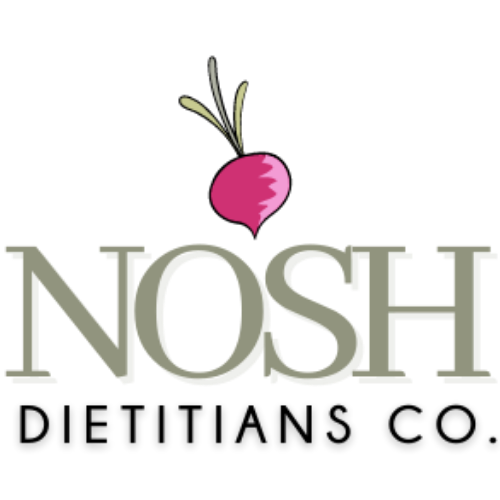Dietitians Need to Be Confident with Menu Reviews
Menu reviews - dietitians either love them or loathe them!
I’ve found that dietitians tend to not enjoy them because we don’t get the training or have the experience to be able to do them confidently. Elderly nutrition is a specialist area because, as we get older, we need more specific nutrients and high quality protein, but appetites and overall intake can be really challenging to meet these requirements.
In a nutshell - they need more protein and nutrients but are less inclined to eat them!
I don’t know the answer as to why this is not covered to a greater extent in our training, but it certainly should be. There’s a heavy focus on working in a clinical setting but only minor training in food service, which then affects the number of dietitians who want to work in aged care.
Menu reviews for residential aged care nutrition is a significant part of what we do, but also highly valuable to facilities. When we meet the expectations of residents (or consumers) for food quality and taste, we help facilities meet the new Quality Standards and reduce consumer complaints. This helps them keep their bed vacancy rates low by attracting new people in through featuring one of the most important parts of their day - the meal time experience.
So if menus are a new part of your role or if you are wanting to branch out into this field, what are the key areas to focus on? Here are my top 3 tips.
My Top 3 Menu Review Tips
Know your population group
If the facility is new to you, find out as much as you can about your population demographics, to be able to give appropriate feedback on their menu. For example, is there a majority of residents from a particular cultural heritage?
I’ve had a few facilities that were predominantly of Italian descent, so having menu items such as chicken stir-fry with rice or even pasta with heavy creamy sauces were not popular. Feedback that was given to me from the residents is that they like lighter sauce options on their pasta, even a simple olive oil stirred through with some roasted vegetables.
It’s also good to go and see how the meals are produced in the kitchen. I’ve been to one facility where the lasagna was bought in pre-made, so of course the Italian women were very critical on the quality of the food! One particular comment to me was “they don’t know how to make good pasta sauce”. So while the ‘right’ meal options may be listed on the menu, we also need to ensure that the food cooked is made in the way that consumers are expecting.
Consumer input into the menu is vital and is now also required for the Quality Standard 4. This can look like a monthly catering meeting with residents and family members, where the chef or catering manager discusses options with consumers and listens to feedback to make appropriate updates. You might also get a few traditional family recipes thrown in for your own recipe collection!
Know the Kitchen Staff Resources
This may not seem particularly relevant to us as dietitians, however it plays a huge role in how a menu is implemented. The menu items may appear to be balanced and suitable, but if the meals cannot be produced with the catering staff available then the menu is ineffective.
To meet Quality Standards, the facility menu needs to be followed by catering to allow residents the choice of meals and to ensure that variety is offered. If the menu is being changed because of lower catering staff hours or skill levels to be able to prepare the scheduled meals, then they are not meeting standards.
A significant part of the new accreditation process is consumer interviews, so informing the residents of menu options plus creating confidence in the kitchen by being true to the menu is integral for positive feedback on the food service.
For example, if there are toasted sandwiches on for the evening meal but there is only one kitchen hand to provide meals for 80 residents, then this is unlikely to be provided. Time intensive meals that need to be individually prepared are not possible with only one staff member available.
Part of the menu review process includes meetings with the chef or catering manager to determine the staffing levels at each meal period, to then be able to assess if the menu is appropriate.
Know your Framework
The Dietitians Australia Menu and Mealtime Quality Assessment Tool is my framework of choice. This is available for free for all dietitians registered with DA.
Why do I choose to use this?
It includes a framework to use for a site visit, including questions to ask the catering manager, portion sizes of meals, amounts of raw ingredients used to be able to quantify protein in each meal etc.
It can be completed in an online format at the site visit, reducing the time needed to complete a menu review.
It gives specific amounts for core food groups.
It covers the meal time experience, including the environment and staffing assistance at meals. This is important to include in your review as it also helps the facility to meet this section of the Quality Standards.
It is comprehensive - there is nothing more that I would add to this document to effectively review a facility’s menu.
Menu reviews are a vital part of our role and help to build a strong relationship with the facility staff - our customers. The most important part? It establishes a quality and delicious meal service for our residents!
If you’re looking for extra guidance or mentoring to help you get started in reviewing menus for residential aged care then click HERE to book in for a discovery call. The best time to start is NOW!

